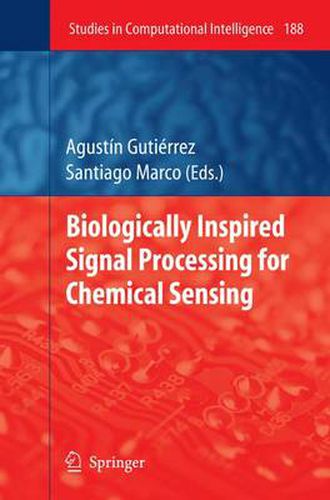Readings Newsletter
Become a Readings Member to make your shopping experience even easier.
Sign in or sign up for free!
You’re not far away from qualifying for FREE standard shipping within Australia
You’ve qualified for FREE standard shipping within Australia
The cart is loading…






This title is printed to order. This book may have been self-published. If so, we cannot guarantee the quality of the content. In the main most books will have gone through the editing process however some may not. We therefore suggest that you be aware of this before ordering this book. If in doubt check either the author or publisher’s details as we are unable to accept any returns unless they are faulty. Please contact us if you have any questions.
Biologically inspired approaches for artificial sensing have been extensively applied to different sensory modalities over the last decades and chemical senses have been no exception. The olfactory system, and the gustatory system to a minor extent, has been regarded as a model for the development of new artificial chemical sensing s- tems. One of the main contributions to this field was done by Persaud and Dodd in 1982 when they proposed a system based on an array of broad-selective chemical sensors coupled with a pattern recognition engine. The array aimed at mimicking the sensing strategy followed by the olfactory system where a population of bro- selective olfactory receptor neurons encodes for chemical information as patterns of activity across the neuron population. The pattern recognition engine proposed was not based on bio-inspired but on statistical methods. This influential work gave rise to a new line of research where this paradigm has been used to build chemical sensing instruments applied to a wide range of odor detection problems. More recently, some researchers have proposed to extend the biological inspiration of this system also to the processing of the sensor array signals. This has been mo- vated in part by the increasing body of knowledge available on biological olfaction, which has become in the last decade a focus of attention of the experimental neu- science community.
$9.00 standard shipping within Australia
FREE standard shipping within Australia for orders over $100.00
Express & International shipping calculated at checkout
This title is printed to order. This book may have been self-published. If so, we cannot guarantee the quality of the content. In the main most books will have gone through the editing process however some may not. We therefore suggest that you be aware of this before ordering this book. If in doubt check either the author or publisher’s details as we are unable to accept any returns unless they are faulty. Please contact us if you have any questions.
Biologically inspired approaches for artificial sensing have been extensively applied to different sensory modalities over the last decades and chemical senses have been no exception. The olfactory system, and the gustatory system to a minor extent, has been regarded as a model for the development of new artificial chemical sensing s- tems. One of the main contributions to this field was done by Persaud and Dodd in 1982 when they proposed a system based on an array of broad-selective chemical sensors coupled with a pattern recognition engine. The array aimed at mimicking the sensing strategy followed by the olfactory system where a population of bro- selective olfactory receptor neurons encodes for chemical information as patterns of activity across the neuron population. The pattern recognition engine proposed was not based on bio-inspired but on statistical methods. This influential work gave rise to a new line of research where this paradigm has been used to build chemical sensing instruments applied to a wide range of odor detection problems. More recently, some researchers have proposed to extend the biological inspiration of this system also to the processing of the sensor array signals. This has been mo- vated in part by the increasing body of knowledge available on biological olfaction, which has become in the last decade a focus of attention of the experimental neu- science community.